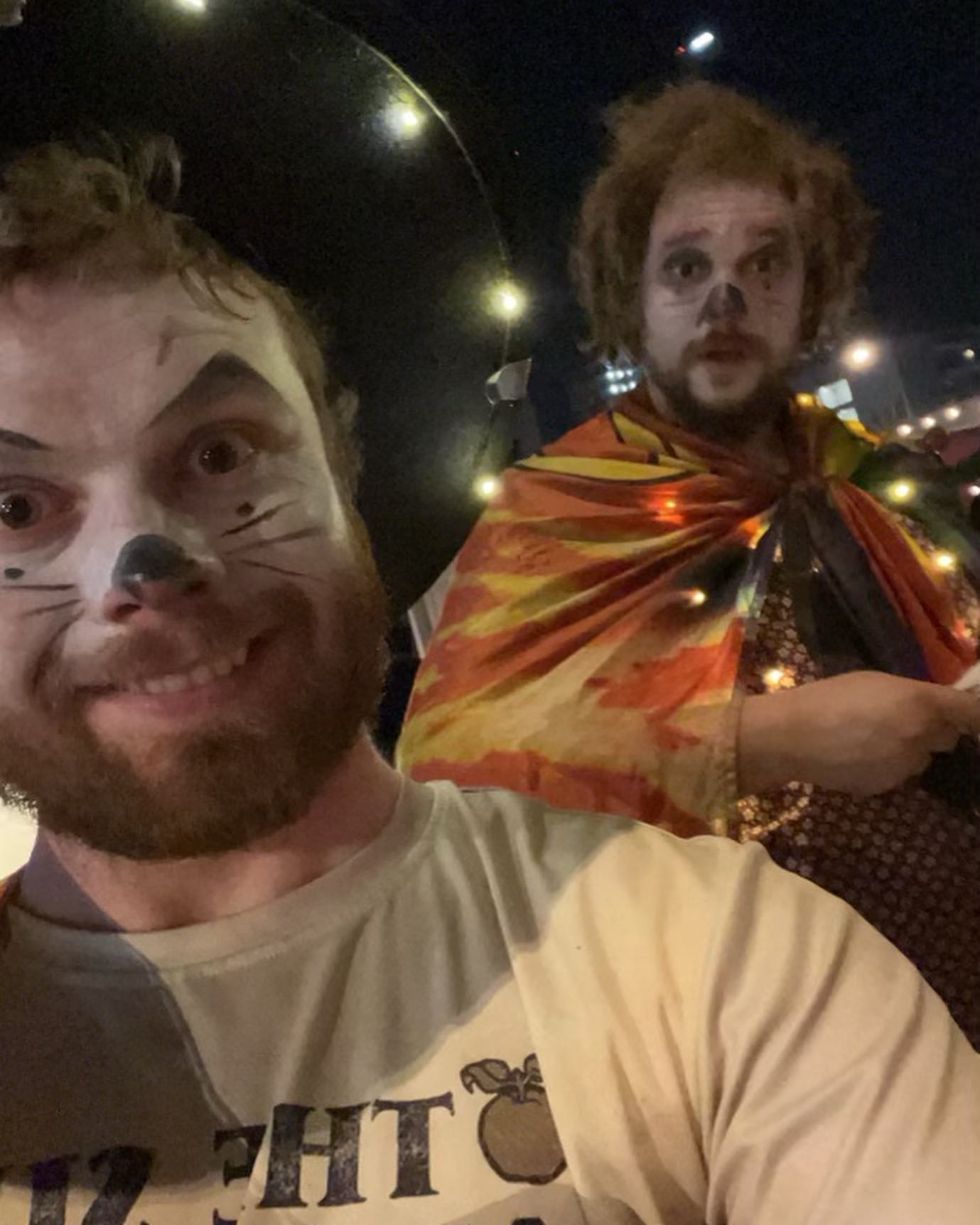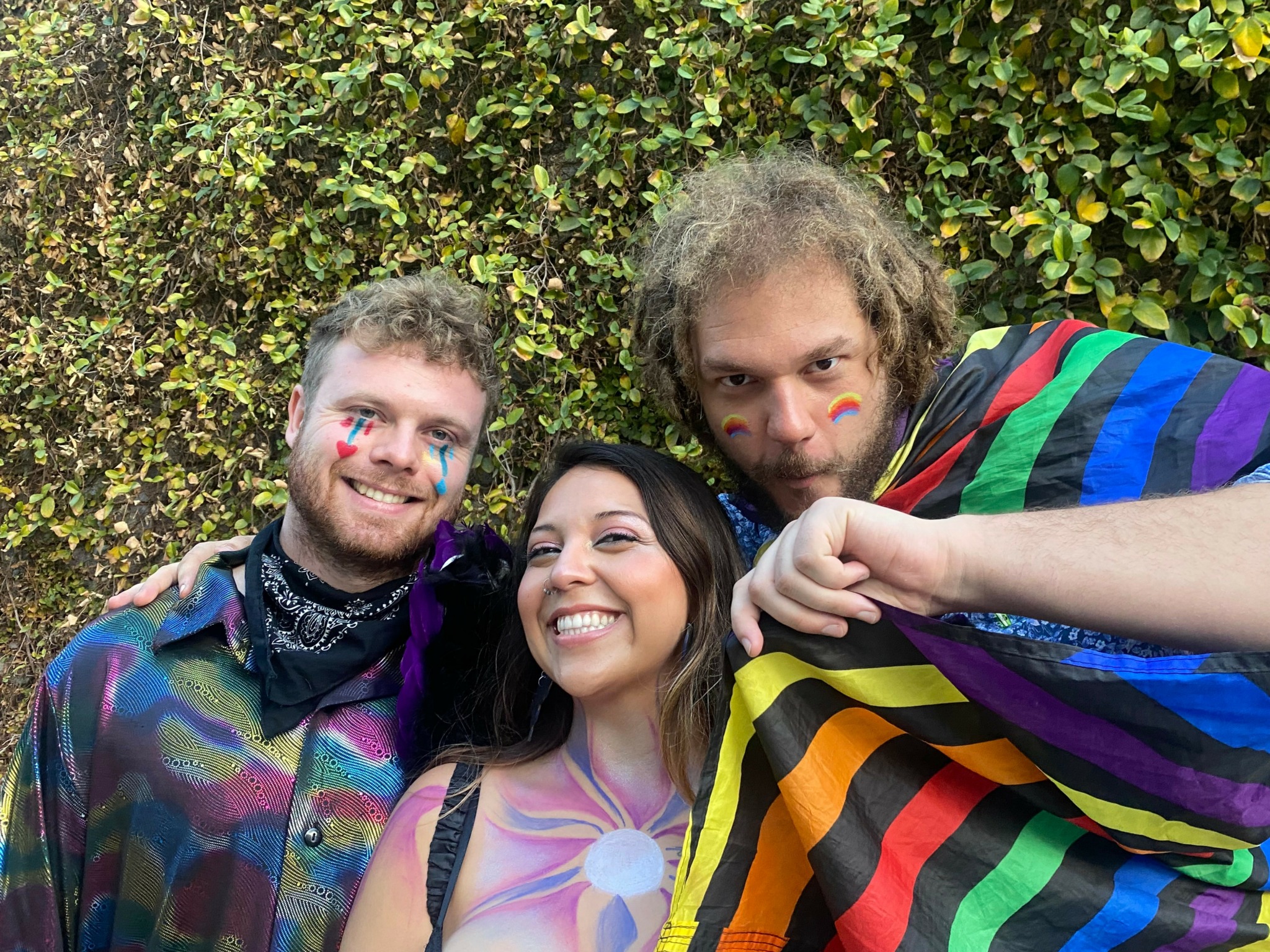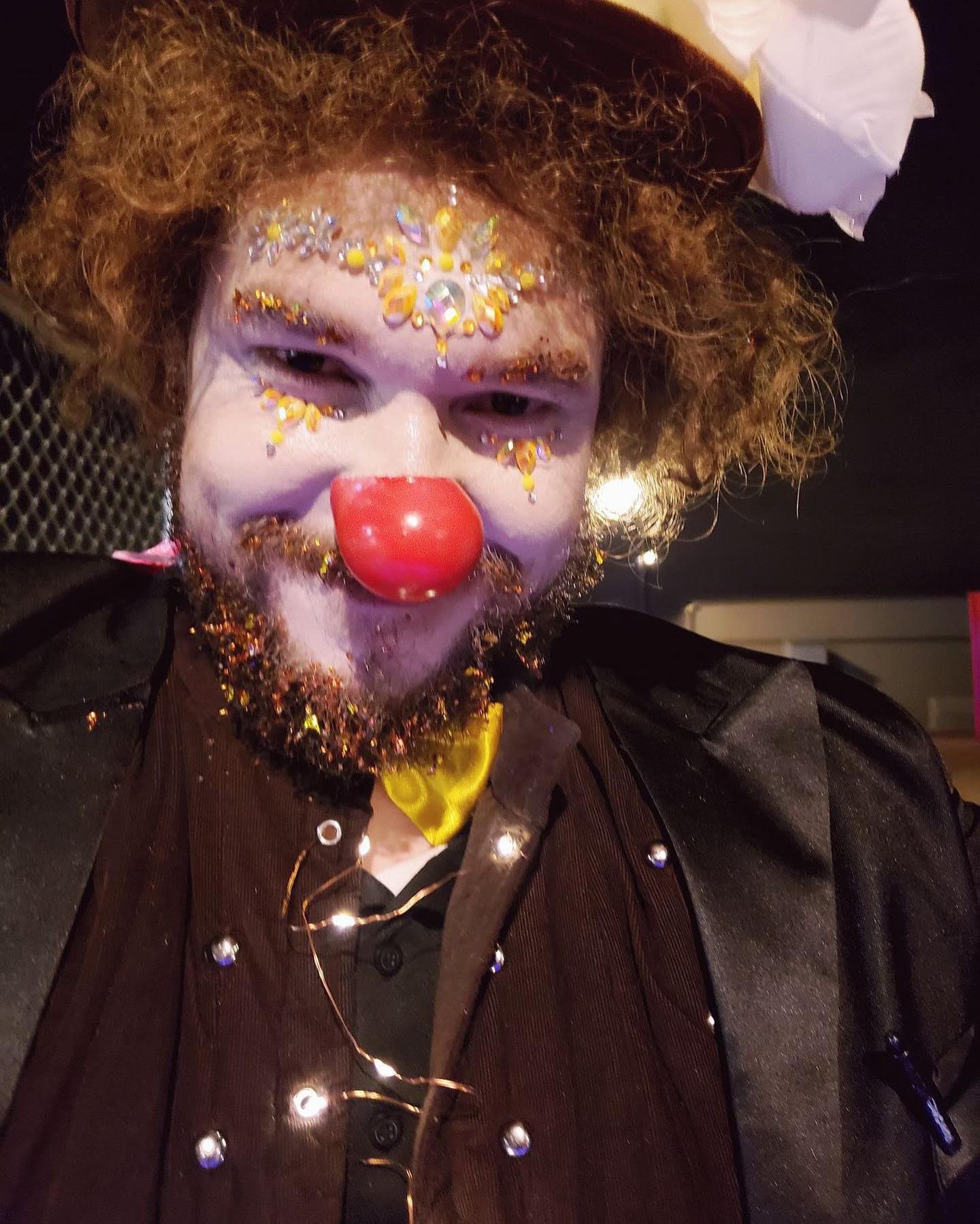We caught up with the brilliant and insightful Sebastian Roundtree a few weeks ago and have shared our conversation below.
Sebastian, appreciate you joining us today. We’d love to hear the backstory behind a risk you’ve taken – whether big or small, walk us through what it was like and how it ultimately turned out.
When I was in my mid-twenties, I did something reckless: I quit my job so I could perform and write more. I didn’t have any real plan, nor any real savings–just a fiery rainbow of passion deep in my bones. I bounced between friends’ couches and my dad’s spare room, living off scraps, favors, and whatever I could charm out of the day.
That year, I became a wandering spectacle on the streets of Phoenix. I wore oddball costumes: a suit jacket with pajama bottoms, or a blue Santa Claus hauling a sack of presents over my shoulder. I pulled tarot cards and read poems at bus stops, in cafes, and between bites at late-night diners. On the good nights, it felt like alchemy. One poem could coax a stranger into sharing a buried childhood memory, another might send an entire room into fits of laughter over some absurd prop I’d pulled from my bag. But there were a lot of nights when the magic faded away, and I felt less like a performer and more like a beggar dressed in manic hope.
All of this was building toward my big gamble: a warehouse poetry and music show I produced myself. I busked with a sign advertising it, met a visual artist who designed a poster, and blanketed the stage with my decorated journals like they were spellbooks. The performance became a pseudo ritual of poetry, story telling, and absurd comedy.
Financially, it was a bust. Only a few dozen people showed up. But two things happened that made it worth every risk. First, someone slipped a hundred-dollar bill into my tip jar—a reminder that my work could move people deeply. Second, and more importantly, one audience member had a connection to a stage manager in Arizona’s festival circuit. A few months later, I was booked for my first festival gig as a poet and entertainer.
That festival cracked the door wide open. The performances I gave there still lead to bookings years later. It’s one of life’s ironies: quitting my job without a plan was probably the worst decision I could’ve made—except that it put me exactly where I needed to be to start my professional performing career.

Sebastian, before we move on to more of these sorts of questions, can you take some time to bring our readers up to speed on you and what you do?
I’m a spoken word poet, performer, and teaching artist who has become a familiar presence at art events and festivals across Phoenix and throughout Arizona. People often recognize me by the rainbow cape draped over my shoulders and the leaf-entwined basket I carry—my traveling stage and prop trunk rolled into one.
I found my way into performance the same way many do: in the school auditorium, under hot stage lights. High school and college theatre gave me the discipline and confidence to command a room. After graduation, I took that training to the streets, busking at downtown art walks and crafting custom poems for anyone who stopped to chat. Those street-side sets eventually led to hosting major local arts events and performing at landmark gatherings like “Convergence” at Arcosanti and “June Jam” at the Playa Ponderosa. My foray into clowning began when the troupe “Jolly Trixsters” invited me into their world—suddenly I was trading lines of poetry for kooky costumes, dancing at raves, and crafting a drag queen clown persona as “Lady Rainbow”.
Today, my work moves fluidly between poetry, clowning, dance, and education. As a Teaching Artist with the Scottsdale Museum of Contemporary Art, in partnership with Wolf Trap (a national non-profit based in Washington D.C.), I lead eight-week residencies in preschool, kindergarten, and first-grade classrooms. Using arts integration techniques, I help students strengthen literacy and communication skills, while giving teachers new tools to bring creativity into their own lesson plans. I’m also pioneering a poetry-based residency for junior high students with low literacy. The goal is to help young people discover their voices, develop a love for writing, and build confidence in reading and writing enough to help them achieve academic success and realize their goals.
Finding my place as a teaching artist is the proudest milestone of my creative career. As a poet, my mission has always been to confront the issues people carry silently—depression, trauma, the ongoing work of mental health—and to illuminate them with humor, humanity, and art. In the classroom, I’ve found a way to make that illumination last, sparking a joy in words and performance that students can carry for the rest of their lives.

What do you find most rewarding about being a creative?
For me, the most rewarding part of being an artist is spreading inspiration. When something I make nudges someone else to write, dance, paint, or simply speak from the heart, I’m reminded that art is a living canon, one voice awakening another.
I believe creativity is a human utility. When you turn it up, other essentials rise with it: love, free will, consciousness, empathy. Through storytelling, clowning, and performance, I’m not offering escapism so much as an invitation to experience the alchemy of imagination. The goal is to help audiences feel brave enough to explore their own voice and follow the thread of self-discovery that creativity so often reveals.
You can’t easily measure what a spark becomes. But every time I see someone’s eyes light up, or hear later that a poem helped them start a journal, apply to a program, or tell a difficult truth, I know the work mattered. That ripple effect is the reward.

Is there a particular goal or mission driving your creative journey?
My mission as a creative is to shine light on the conversations our culture too often avoids. We live in a world where the normalization of nihilism can quietly weigh people down, convincing them that hope is naïve or irrelevant. I reject that.
Despite the challenges of the world today, from political turmoil to environmental crisis, I believe this is one of the most exciting times in human history. Technology has expanded the reach of our voices and our stories, offering opportunities to connect, create, and collaborate like never before.
Through poetry, clowning, and performance, I work to rekindle optimism, to remind audiences that faith in humanity is not only possible, but necessary. My art invites people to imagine a better future and to see themselves as active participants in making it real.
Contact Info:
- Instagram: @s.m.roundtree
- Linkedin: https://www.linkedin.com/in/smroundtree





